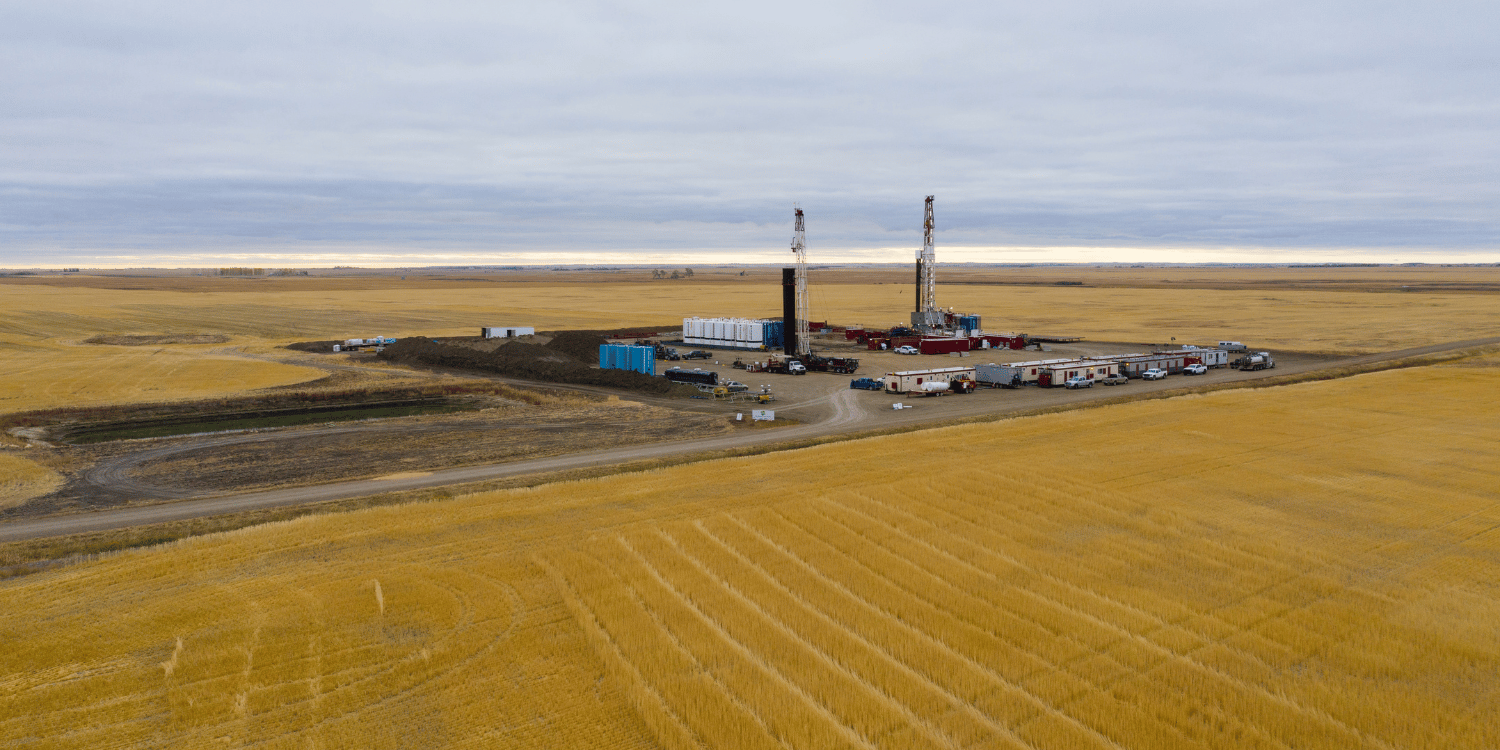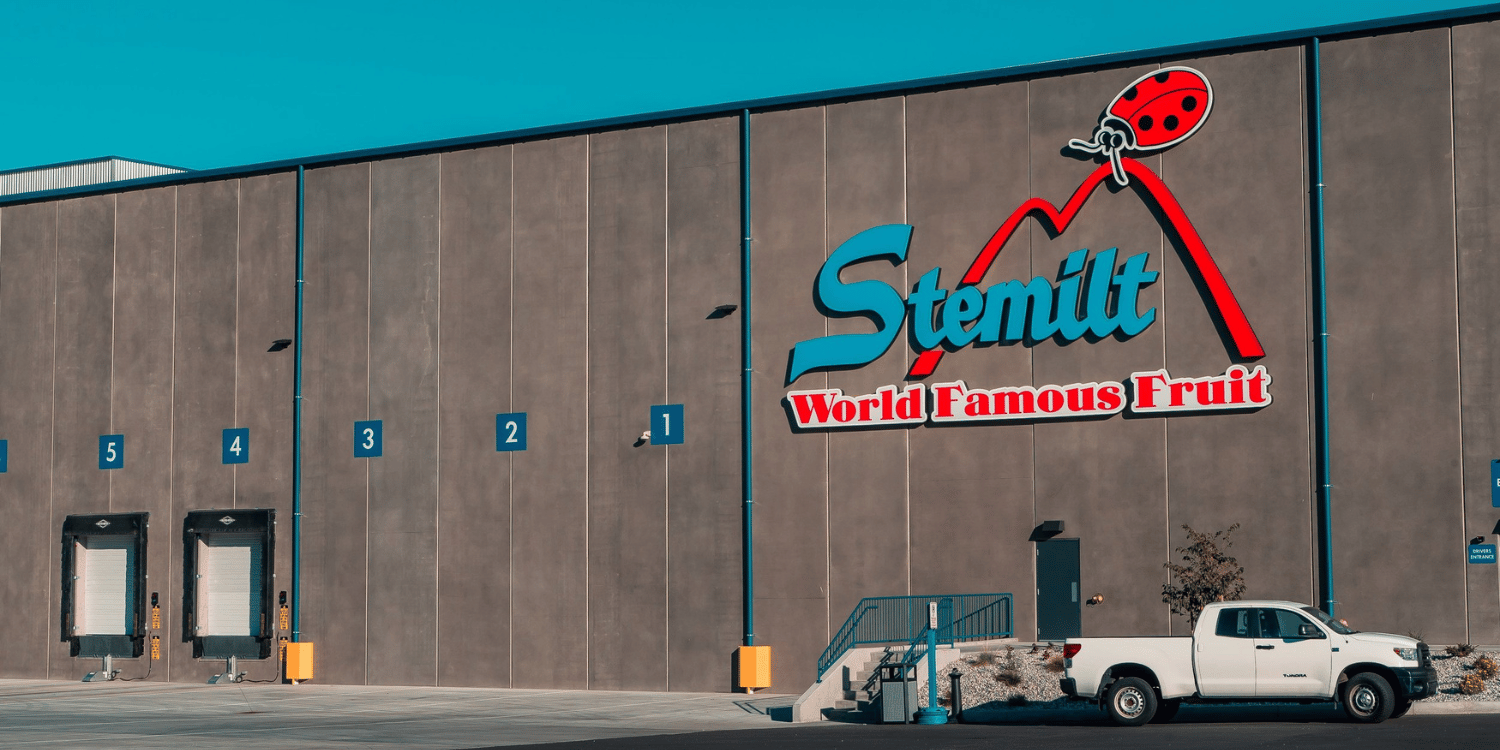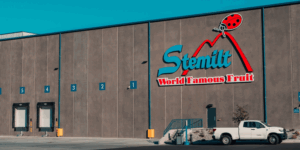Ensuring the safety and quality of our food is a concern that cannot be overstated.
The scope of food safety stretches across the entire food chain, from farm to fork. It is particularly crucial in the handling and preparation of produce, where harmful contaminants can easily be introduced.
While regulations are in place to help enforce these standards, upholding them requires commitment and effective practice from all stakeholders.
This article provides insights into these fundamental practices. It aims to equip readers with practical knowledge to protect consumers and maintain the integrity of the food industry.
- Always sanitize hands before handling fresh produce.
- Clean and disinfect handling surfaces regularly.
- Ensure refrigeration units maintain the required temperatures.
- Prompt removal of decayed fruits to avoid cross-contamination.
- Ensure separate storage and transport for old and new produce.
While maintaining baseline food safety standards in handling produce is critically important, it’s just one aspect of a much larger picture.
On the pages ahead, we’re going to explore additional practices to maintain food safety. We will touch upon topics such as the role of training for your staff, effective traceability systems, and the importance of maintaining structured audit and inspection protocols.
You’ll find these discussions practical and accessible, irrespective of your background in food production. Keep reading as we navigate these crucial facets of upholding food safety standards together.
Contents
- Practices For Upholding Food Safety Standards In Produce
- 1. Sanitize Hands Before Handling Produce
- 2. Frequently Clean and Disinfect Handling Surfaces
- 3. Regularly check temperatures of refrigeration units
- 4. Promptly Remove Decayed Fruit to Prevent Cross-Contamination
- 5. Never Mix Old and New Produce
- 6. Separate Produce during Storage and Transport
- 7. Monitor and Control Pests in Storage Areas
- The Bottom Line
Practices For Upholding Food Safety Standards In Produce
1. Sanitize Hands Before Handling Produce
In Short: Consistent hand sanitation, particularly before handling produce, can prevent the spread of harmful microbes that cause foodborne illnesses. Regular hand washing or use of an alcohol-based sanitizer is an integral part of ensuring the overall safety of produce, protecting consumers and upholding the food industry’s reputation.
Paying attention to personal hygiene, most notably through the sanitization of hands, is a fundamental first step in maintaining safe practices in the handling of produce.
This acts as an initial guard against harmful microbes which may inadvertently contaminate the food in the course of its handling.
Pathogens existing in our surroundings can unwittingly serve as vehicles of foodborne illnesses, and hence regular sanitization prevents any potential transfer of these germs onto the fruits and vegetables.
Regular handwashing, with soap and clean running water for at least 20 seconds, is highly encouraged by food safety authorities.
However, in instances where soap and water are not readily available, an alcohol-based hand sanitizer with at least 60% alcohol can serve as a handy alternative.
This is because, alcohol-based sanitizers can eliminate most types of germs, certain chemicals and dirt that could potentially exist on one’s hands.
In the below list, I have outlined some key occasions when hand sanitization is especially necessary while handling produce:
- Before and after handling produce
- After using the bathroom
- After touching garbage
- After blowing your nose, coughing, or sneezing
- After touching an animal, animal feed, or animal waste
- After handling money, especially if switching between handling money and handling produce
I want you to remember, while hand sanitization is important, it is not a panacea against all forms of contamination in the handling of produce.
It is but one component of a broader, comprehensive approach towards ensuring the overall safety and integrity of produce.
This safeguards not just those handling the fruits and vegetables, but also the final consumers who rely on the safety assurances of the food industry.
The assurance of safety in produce not only guarantees the wellbeing of the consumers, but also serves to maintain the reputation of the seller and producers; no one wants to consume products that have been associated with foodborne illness outbreaks.
It also reduces the industry-wide costs associated with such outbreaks, including costs associated with healthcare, recalls, legal liabilities and loss of sales.
Pro Tip: Sanitizing your hands, preferably by washing with soap and clean running water for at least 20 seconds, is fundamental to maintaining safe practices in handling produce and preventing potential transfer of germs onto fruits and vegetables.
Any compromises made on hand sanitization can therefore have far-reaching implications that go beyond the immediate handling of the produce.
In essence, hand sanitization serves as a key cornerstone in proactive measures we can all observe in upholding food safety standards in produce handling.
2. Frequently Clean and Disinfect Handling Surfaces
In Short: Maintaining cleanliness and proper sanitation in areas where food is handled is crucial to prevent harmful bacteria and cross-contamination. This can be achieved by regularly cleaning and disinfecting high traffic areas, using safe and effective cleaning agents, and adhering to a cleaning schedule as well as training staff on correct cleaning practices.
Maintaining the highest standard of cleanliness and sanitation in places where produce is handled is not just a desirable practice but an indispensable one.
High traffic areas such as countertops, cutting boards, and storage bins should be particularly focused on as they can easily harbor harmful bacteria and pathogens.
The risk of cross-contamination is often high in these areas, hence frequent cleaning and disinfection are key.
In addition, the use of appropriate cleaning agents and disinfectants contributes significantly to food safety.
It is worth mentioning, however, that the indiscriminate use of cleaning agents and disinfectants can also raise health concerns.
Thus, their usage should be guided by the manufacturer’s instructions to ensure they are both efficient and safe.
In the middle of these practices, there are a few key steps that need to be followed. These steps ensure that the cleaning and disinfecting procedures are being completed correctly.
- Firstly, remove visible dirt and debris from the surface.
- Apply a cleaning solution and scrub as necessary.
- Rinse thoroughly with clean, clear water.
- Apply a food-safe disinfectant, following manufacturer’s instructions for contact time.
- Ensure to do a final rinse if required by the disinfectant directions.
Regular adherence to these steps will go a long way in ensuring that handling surfaces are adequately clean and free from harmful bacteria and pathogens.
Furthermore, it is crucial to have a standard cleaning schedule and to stick to it religiously.
Non-compliance with such a schedule could lead to the proliferation of harmful microorganisms that may compromise the safety of the produce.
Lastly, investment in employee training regarding proper cleaning and disinfection techniques could also prove invaluable.
Pro Tip: It’s indispensable to maintain the highest standard of cleanliness and sanitation in areas where food is handled, with particularly focus on high-traffic areas like countertops, cutting boards, and storage bins as cross-contamination risk is often high; remember to use cleaning agents and disinfectants appropriately and efficiently, guided by the manufacturer’s instructions, and adhere to a standard cleaning schedule religiously.
Trained staff are more likely to appreciate the importance of these procedures and employ them consistently.
After all, cleanliness and hygiene protocols are only effective when everyone is committed to upholding them.
3. Regularly check temperatures of refrigeration units
In Short: Regular temperature checks of refrigeration units is essential for food safety standards as it aids in preserving freshness, inhibiting bacterial growth, and preventing spoilage. These checks also serve as an early warning system against mechanical failures and help in maintaining a safe and fresh supply of produce.
Our discussion now pivots toward the necessity of regularly checking the temperature of refrigeration units. It may not seem as immediately critical as scrubbing surfaces or sanitizing hands, but this standard practice remains a linchpin in maintaining food safety with produce.
The beloved fruits and vegetables that grace our tables have their own optimal temperature ranges for storage. To stay fresh and safe, these ranges must be strictly adhered to, hence the need for regular temperature checks.
Refrigeration units are not infallible machines; mechanical failures can occur unexpectedly. Regular temperature checks serve as an early warning system, preventing spoilage from unnoticed mechanical failures.
When it comes to managing large volumes of produce, specifically, a minor temperature elevation could trigger a chain reaction of spoilage, leading to significant losses. That’s why maintaining consistent, optimal temperatures is a priority.
On that note, let’s take a moment to highlight some key reasons why it is important to regularly check temperatures:
- Preserve Freshness: Low temperatures slow down the ripening process, thus extending the freshness of the produce.
- Inhibit Bacterial Growth: Most bacteria that cause foodborne illnesses grow rapidly at high temperatures, hence maintaining a low temperature essential.
- Prevent Spoilage: Fruits and vegetables have a high water content, making them prone to spoilage at improper temperatures.
These underscore the crucial role temperature management plays in upholding food safety standards in produce.
The frequency of these checks also matters. The US Food and Drug Administration (FDA) recommends checking the refrigerator’s temperature at least once per day. However, for commercial operations or during peak seasons, more frequent checks may be beneficial.
It’s important to note that simply observing the built-in thermometer of a refrigerator is not always enough. Investing in a stand-alone refrigerator thermometer can lend a higher precision of temperature readings.
Pro Tip: Regularly checking the temperatures of refrigeration units is vital in maintaining food safety, as it helps preserve freshness, inhibit bacterial growth, prevent spoilage, and ultimately, protects public health.
These additional checks may seem tedious but they play a crucial role in maintaining a safe and fresh supply of produce.
In essence, the task of regularly checking refrigeration temperatures, though seemingly inconsequential, is indeed important when it comes to upholding food safety standards in produce. It protects both the produce suppliers and consumers from potential food-related hazards, thus ensuring wellbeing and protecting public health.
4. Promptly Remove Decayed Fruit to Prevent Cross-Contamination
In Short: Promptly removing decayed fruit is crucial to prevent cross-contamination and maintain produce safety standards. Effective disposal methods, including immediate removal and isolation of spoiled fruit, are necessary to minimize disease outbreak and financial losses.
The importance of promptly removing decayed fruit to prevent cross-contamination cannot be overstated in the world of produce handling.
Decayed fruit can harbor diseases and microorganisms that lead to the degradation and spoilage of other produce in its vicinity, hence the need to practice immediate disposal.
One thing we need to grasp is, not all bacteria is visible to the naked eye.
You may not see it, but a fruit that is starting to rot will infect its companions, even if you do not see any significant changes at first.
Being proactive in removing these fruits will save money and increase revenue by keeping the most saleable items in stock.
It’s relatively easy to identify fruits that have started to decay.
Indeed, dark spots, an off or sour smell, a change in texture, or oozing liquid are telltale signs that a fruit is spoiling and should be removed immediately.
Next, let’s identify some effective methods of handling the waste disposal of decayed produce:
- Immediate removal. Upon identification, degrade fruits should be removed at once to prevent other fruits from getting contaminated.
- Isolate. Once removed, the fruit should be kept away from other fruits. This practice will limit the spread of bacteria and other organisms.
- Disposal. The process doesn’t end at separation; the decaying fruits should be disposed of effectively, either by composting or throwing them away securely.
Keeping these points in mind will minimize the risk of an outbreak of diseases among your produce.
Keep in mind, an ounce of prevention is better than a pound of cure, particularly when dealing with fruits and vegetables.
Not only does it uphold food safety standards, but it also significantly reduces the companies’ exposure to economic damage due to loss in sales from substandard goods.
Top-notch restaurants and grocery stores are aware of this and go to great lengths to ensure the freshness and safety of their produce.
Whichever part of the food industry you work in, this is a practice you literally cannot afford to overlook.
Routinely inspecting and eliminating any rotten produce is a simple and effective measure for maintaining high food safety standards.
Pro Tip: To prevent the spread of diseases and microorganisms and maintain food safety standards, promptly remove and properly dispose of any decayed fruit from your stock.
Finally, it’s also important to remember that new stock should never be mixed with old stock, and separating produce during storage and transport is crucial to produce safety.
Through these practices, we can ensure the behavior that promotes healthier and safer eating habits across the community.
5. Never Mix Old and New Produce
In Short: It’s crucial to never mix old and new produce, as it can lead to cross-contamination and compromise food safety standards. Utilize the First-In-First-Out (FIFO) method to prevent mixing, this involves organized storage, comprehensive labeling, and ensuring older produce is sold first.
When managing perishable food items, it’s imperative to heed the advice: never mix old and new produce.
Particularly in the context of a store or restaurant, mixing old and new produce can lead to a host of problems, not least of which is the potential for cross-contamination.
Imagine a scenario where old apples, starting to go bad, are mixed with a fresh delivery of apples. The decay from the old apples can quickly spread to the new, reducing their shelf-life and posing a potential risk to consumers, effectively compromising food safety standards.
An established principle in food handling known as the First-In-First-Out (FIFO) method plays a crucial role in this aspect. Using this method, businesses ensure that older produce is sold first before the newer ones, as this significantly reduces the risk of food spoilage and waste.
There are specific steps one needs to follow while practicing the FIFO method to prevent mixing old and new produce.
Let’s break it down into manageable steps:
- Organize your storage area: Identify a space to clearly define old and new produce. This separation could be based on the produce’s date of purchase or the date of delivery.
- Label everything: Make sure that every item in your storage area has a label that clearly indicates the product type and the date it was received.
- Stock the new produce behind the old one: This gives visual control over the rotation and consumption of older produce as they get utilized first.
Not only does this procedure apply to fruits and vegetables, but it’s also critical when dealing with dairy products, meats, and any other perishable food products.
Furthermore, it’s also important to be aware that even though the older produce may look visually ok, it might already have started to degrade on a microbial level. Conversely, it’s possible that new produce could already be tainted.
This is where food safety regulations and practices become invaluable. They guide us in deciding not only how to handle and store food, but also when that food should no longer be served or sold.
Undoubtedly, it may seem like a cumbersome process to implement such rigorous standards. Still, in the long run, it safeguards the integrity of your business, protects your customers, and upholds food safety measures.
Therefore, even though it takes time and effort, never mixing old and new produce leads to a safer and healthier environment for everyone involved in the food consumption process.
6. Separate Produce during Storage and Transport
In Short: Separating types of produce during storage and transportation is a crucial measure in preventing contamination and preserving nutritional integrity. Methods such as designated containers for each produce type, personnel training, and regular audits can effectively minimize food safety risks.
The need to separate produce during storage and transport cannot be overlooked.
While stacking fruits and vegetables together may seem economical space-wise, the risk it poses often far outweighs the immediate benefits.
Unfortunately, the process of maintaining separate storage and transportation for different types of produce is often downplayed, leading to contamination occurrences.
Each type of fruit or vegetable, due to its unique biochemical makeup, harbors a distinct set of bacteria and molds.
When these different types of produce are stored or transported together, it creates a hotbed for cross-contamination as the bacteria and molds can easily spread from one produce to another.
Upholding food safety standards in produce, therefore, requires diligence in preventing such incidences.
Implementing separate storage and transport for each type of produce is not an excessive measure but rather a necessary practice in preventing foodborne diseases.
Let’s take a brief moment to examine key reasons why segregating produce during storage and transport is crucial.
- Different Temperature Requirements: Each type of produce has its ideal storage temperature. Mixing them up could result in suboptimal storage conditions, leading to spoilage and hence food safety issues.
- Prevents Cross-Contamination: By keeping different produce separate, we reduce the risk of bacteria and molds moving from one type of produce to another.
- Preserves Nutritional Value: Mixing different kinds of produce can lead to the degradation of their nutritional value. Keeping them separated can help retain their nutrients and hence their overall quality.
Enforcing this practice of separation, though seemingly difficult, can be managed well by incorporating some simple measures.
For instance, assigning specific containers, crates or bins for each type of produce can effectively mitigate risks of cross-contamination during storage or transportation.
Moreover, relevant personnel ought to be trained and constantly reminded of the importance of keeping different produce separate.
Particularly, they should understand the implications of mixing produce and the consequences it could have on the final consumer’s health.
Regular inspections and audits can also aid in ensuring that all rules and regulations concerning the separation of produce during storage and transport are adhered to.
Transparency and strict maintenance of food safety standards in handling produce is a shared responsibility between all parties from the farm to the table.
Safe handling of produce is not just about disinfection techniques, temperature controls, and the likes.
Sometimes, it is as simple as understanding the need to keep your apples away from your onions.
7. Monitor and Control Pests in Storage Areas
In Short: Maintaining cleanliness, hygiene, and pest-free storage areas is essential for upholding food safety standards as pests can cause produce decay and contamination. Deploying strategies like regular inspections, sanitation, physical barriers, chemical treatments, and professional pest control can significantly reduce the risk, with a proactive rather than reactive approach for effective pest management.
For maintaining food safety standards in produce, the management and monitoring of pests in storage areas is of crucial importance.
Storage areas where fruits and vegetables are kept should remain clean, hygienic and pest-free at all times.
If neglected, these areas can become breeding grounds for rodents, insects, and other pests that can pose a significant threat to food safety.
Damages in produce caused by pests can lead to decay, contamination, or disease transmission.
The process of monitoring and controlling pests in storage areas can be approached in several ways. Let’s dig in further into this topic.
Firstly, routine inspections are necessary. These inspections should be thorough, looking for signs of pest activity like droppings, or damage to the food products.
Here are a list of effective methods to control and monitor pests in food storage areas:
- Sanitation: Keeping storage areas cleaned and sanitized helps reduce pest attraction.
- Physical Barriers: The use of nets, traps, or screens can block entry of pests.
- Chemical Treatments: Used as a last resort, these can help in eradicating pests. But it’s crucial to ensure that these chemicals do not contaminate the food.
- Pest Control Professionals: Hiring professionals can provide a systematic and effective approach to keeping storage areas pest-free.
Although these methods are effective individually, a combination of these strategies will yield the best results.
Look to implement these proactive measures in pest control rather than reacting to the emergence of pests.
Another factor to consider, is to ensure that the produce is stored correctly and in the right conditions to minimize the attraction of pests.
Fruits and vegetables that are overripe or decaying can attract pests, thus, they should be promptly removed from storage.
I cannot emphasize enough the significance of a strict pest management protocol when it comes to safeguarding food safety.
Monitoring and control of pests in storage areas is not a onetime task, but rather a continuous process, as maintaining food safety standards is a commitment to the health of the public.
By consistently implementing the mentioned strategies and measures, we can significantly reduce risks and uphold high food safety standards in the handling and storage of produce.
Let’s remember that food safety starts with us, creating an environment of safety will not only bring about benefits health wise but will also reflect positively on the professionalism and integrity of our work.
The Bottom Line
Maintaining food safety standards in produce is a non-negotiable aspect every participant in the food production line, from farmers to retailers, must prioritize.
A dedicated commitment to best practice principles not only ensures safe and healthy consumption for consumers, but contributes significantly to a business’s reputation for quality and consistency.
Hence, practices such as regular hygiene checks, scientific analysis of foodborne pathogens, proper utilization of pesticides, and rigorous staff training should be steadfastly ingrained.
Adhering to these tactics is a collective effort to build trust, maintain public health, and uphold the integrity of our food systems.
At the end of the day, advancing food safety standards in produce demands a commitment to continuous learning, innovation, and uncompromised diligence.




















